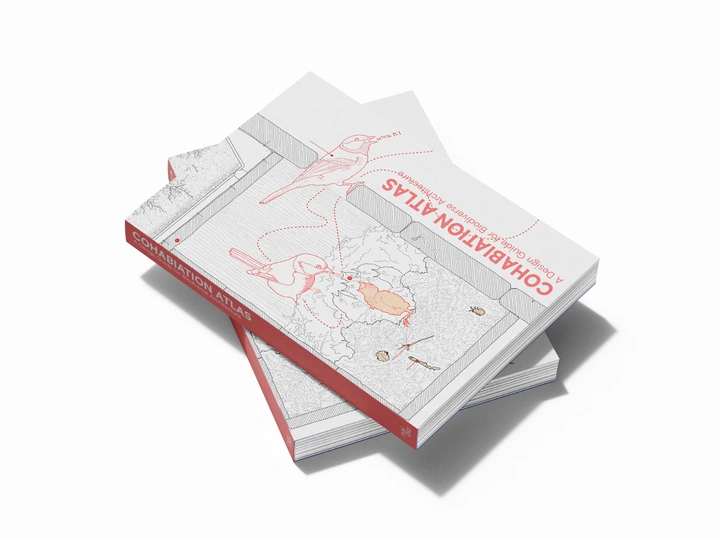Cohabitation Atlas

Konrad Schlüter
Frieder Vogler
The three of us—Philipp Gruber, Frieder Vogler, and Konrad Schlüter—graduated from TU Delft with a Master’s in Architecture and have since been engaged in nature-inclusive design through practice, research, and academic exchange.
Philipp Gruber presented his PhD proposal, Growing Architecture as Multi-Species Habitats – Basics of Multi-Species Design and its Application in Baubotanic Structures, along with the Cohabitation Atlas project at the TU Munich symposium Design-Related Research. He collaborates as an independent researcher with the Chair of Green Technologies in Landscape Architecture at TU Munich, led by Prof. Dr. Ferdinand Ludwig, who also supervises his PhD. His graduation project Growing Residency is currently exhibited in TREES, TIME, ARCHITECTURE at the Architekturmuseum of TUM in the Pinakothek der Moderne, where he will also teach during the August 2025 Summer School.
Frieder Vogler is an architect working at the intersection of architecture, activism, and ecology. His TU Delft thesis explored spatial entanglements between climate activism and the built environment. His short film Architectures of Everyday Activism was exhibited at the 2022 Architecture Biennale Rotterdam. Under the name Manifold Studio, he develops research, installations, and writing. Professionally, he has worked at J. MAYER H, RAU, and Walden Studio, and is now at ANNABAU Architektur und Landschaft in Berlin, focusing on sustainable timber and landscape design.
Konrad Schlüter is an architect at illiz Architektur in Zürich, interested in engaging with existing structures and contexts. At TU Delft, he explored architecture’s symbiosis with urban biodiversity. His thesis Regenerative Campus: Building in Socio-Ecological Networks won first prize in the Campus³ Competition (urbanism category) and was published in Bauwelt. He has worked at KCAP, Atelier Tomas Dirrix, Korteknie Stuhlmacher Architecten, Herzog & de Meuron, and João Paulo Loureiro Arquitectos.
The Cohabitation Atlas is a design guide for biodiverse architecture. Motivated by the urgent need to reimagine cities as shared habitats, the publication compiles illustrated case studies of pioneering architectural projects that support animal life in urban settings. Through detailed ecological design thinking and multiscalar drawings—ranging from detail to urban scale—the illustrations uncover reciprocal relationships between multi-species dwellers and the built environment for architects, students, and city planners.
This proposal for the LINA Community includes a Drawing Workshop, a Lecture on our preliminary drawing experiments, and Research into developing an interactive digital drawing methodology. These elements aim to transform illustration into a collaborative tool for digital communication, research, and ecological design thinking.
The drawing methodology we propose allows designers to visualize the intersection between architectural space and biodiversity, showing how everyday design decisions shape multi-species urban coexistence. By experimenting with this visual language, we hope to enable architects, researchers, and students to speculate on more nature-inclusive spatial futures.
What makes the Cohabitation Atlas a strong fit for LINA is its use of illustration not just as representation, but as a speculative and analytical tool. This aligns with LINA’s mission to foster innovative approaches to spatial design in response to climate and ecological crises. Also intended as a digital, open-source platform, the Cohabitation Atlas aims to build a European network for nature-inclusive architecture, inviting interdisciplinary practitioners to share ideas, challenge assumptions, and rethink cities as shared ecologies—where birds, microbes, mammals, insects, and humans coexist within the vibrant complexity of urban life. We hope joining the LINA Community will help us expand our network and find project partners.